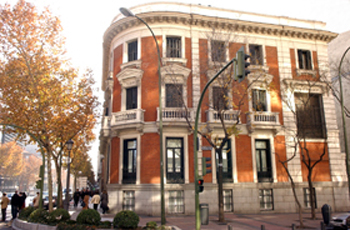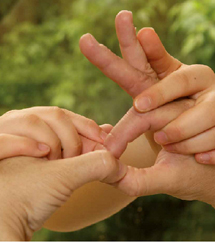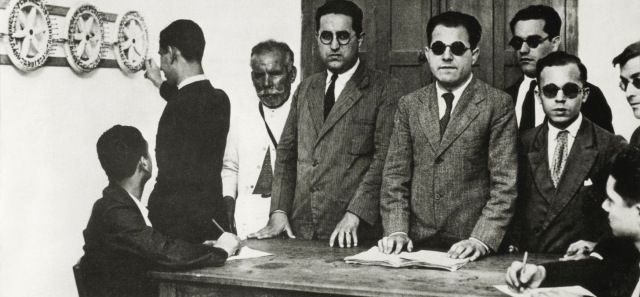A large dose of energy, what we call illusion, is what fuelled the start-up in 1938 of what the world now knows as the ONCE. This is not chauvinism. In its 80 years of existence, which the Organization will be celebrating in 2018, it has built up a system of social benefits for the blind and visually impaired that has no equivalent anywhere else in the world.
A government body, with members taken from several ministries, and the ONCE itself safeguard the fulfilment of its social purpose and progressive adaptation to social, political and economic transformations.

That same source of energy, illusion, was behind the birth in 1988 of a great project: the ONCE Foundation for Cooperation and the Social Inclusion of the Disabled which, in 2013, also celebrates an anniversary, its 25th. During this time the ONCE Foundation has generated more than 80,000 jobs for the disabled. Today, the two institutions, combined in their main purpose, that of the social and labour-market inclusion of the disabled, are known as the ONCE and its Foundation.
Other Supportive Initiatives
Over the years, the Institution has adopted other supportive initiatives. The ONCE Foundation in Support of the Blind in Latin America (FOAL), born in 1998, is a good example. It is currently developing training and employment projects in 19 Latin American countries and other depressed areas. Another example, set up in 2007, is the ONCE Foundation for the Care of the Deafblind (FOAPS).

Meanwhile, within the European Union, the ONCE and its Foundation are strengthening links to ensure that disability has its place on the agenda of community policies. Together with other organizations from the world of disability, it has notched up achievements of great importance, such as the UN Convention on the Rights of Persons with Disabilities (protocol adopted by the UN General Assembly on 13 December 2006 in New York), and the widespread acceptance of its theses in debates such as the EU accessibility regulations or employment for the disabled. European Commissioners have visited Spain in recent years with the ONCE and its Foundation as one of their priorities. The social inclusion model built up in Spain with the ONCE and its Foundation as the driving force has attracted the European Community’s attention.
With the Third Sector
Moreover, the enormous transformation of social structures, both in Spain and the rest of Europe, has led the ONCE to play a decisive role in the nascent but robust social and economic model, now indispensable in the words of many, known as the Third Sector, a representative platform of more than nine million persons at risk of exclusion, which brings together civil associations, movements of persons with a disability, foundations and other groups demanding inclusive public policies in their fight to protect social rights.
Continuous evolution, changing models, in short, the search for greater social equality and non-discriminatory standards. The ONCE of the twenty-first century is situated in this context with the same strength and illusion as when it started out, in the first half of the last century.
Making History
The ONCE is the result of the iron will of the Spanish blind, who, in a particularly difficult moment for Spain, decided to remain on the sidelines no longer but to contribute to the society of the moment, procuring for themselves a dignified way of life. The first raffles organized by the various associations that arose in the decade of the thirties of the last century, mainly in Andalusia, Catalonia and Levante, are the forerunners of the present-day’s Cupón. Their unification and common goal formed the foundations of this Institution.
Much is owed to those “forefathers” who, on 13 December 1938, saw the birth of an Organization with room for all the Spanish blind. A government decree endorsed its foundation and granted the then National Organization of the Blind the right to exploit the so-called “pro-blind” cupón or ticket, so as to provide members with a decent livelihood, with the first draw being held on 8 May 1939.
At that time, the cupón had only three digits, draws were organized on a provincial basis and, to a large extent, the institution’s management was in the hands of the State Administration, which appointed the person in charge, denominated “national leader”. More than 40 years had to pass before the Spanish blind were able to assume responsibility for the ONCE.
Work for All
This initial and underlying aspiration - decent work through the sale of the cupón for all the Spanish blind - was overwhelmingly fulfilled but further professional opportunities needed to be explored. Thus, in the sixties, entry into the labour market was tackled through pioneering centres, such as the Telephony School, the Professional Training Centre and the University Physiotherapy School, veritable milestones in the path towards equality and social and professional integration, which knew no bounds.
Based on these plans, educational centres were created to guarantee good training from the bottom, giving rise to cultural initiatives, such as libraries with Braille and audio supports, and essential services were set in motion, including rehabilitation.
At the same time, Spain was living its so-called Spanish Miracle, with tourism, emigration and foreign investments boosting its strides towards modernity. They were the happy sixties.









